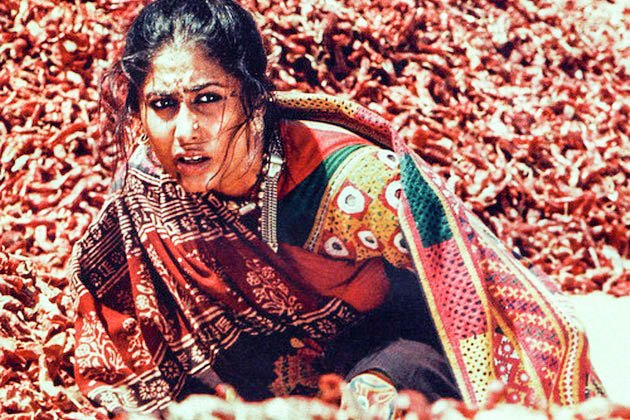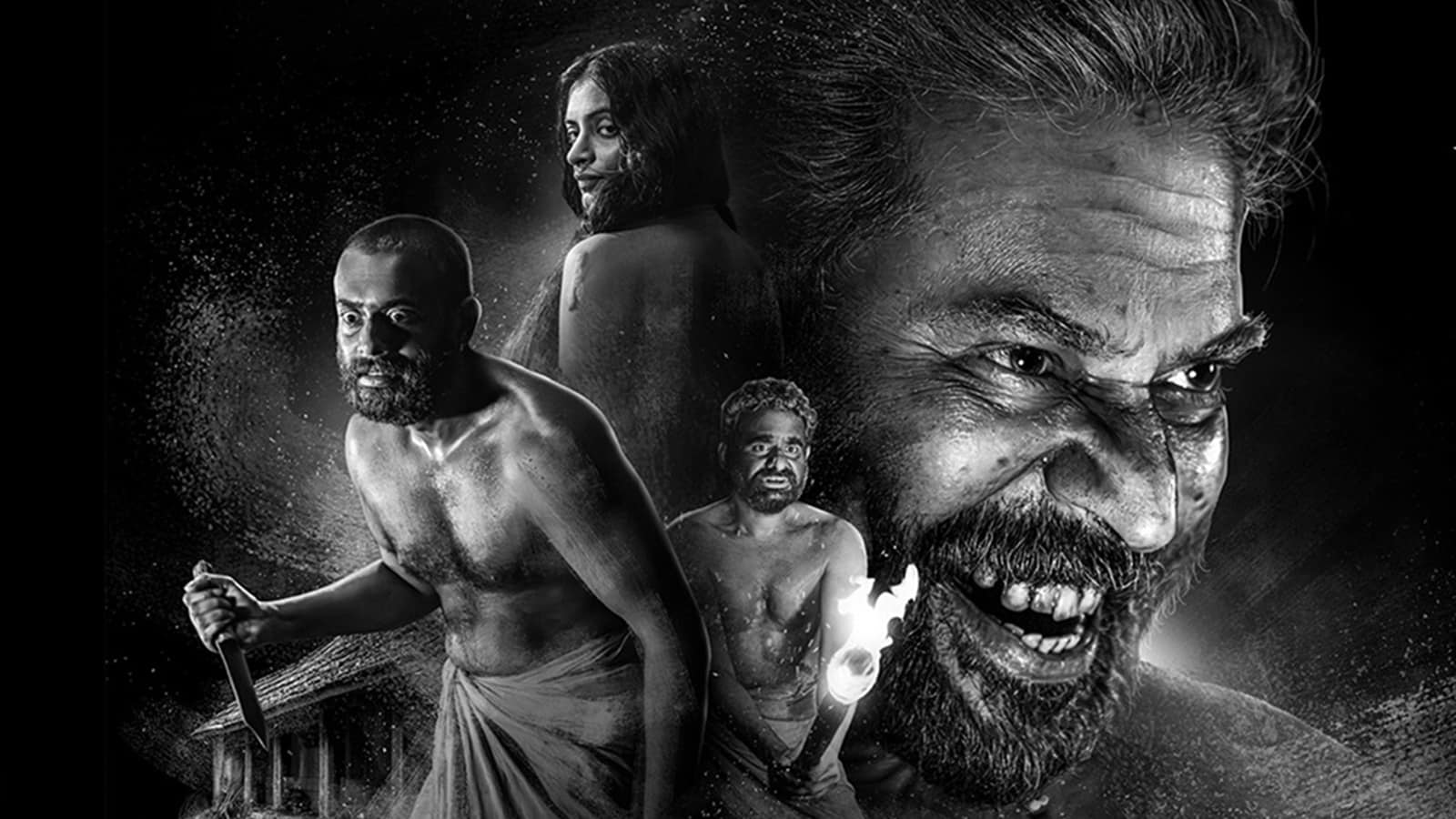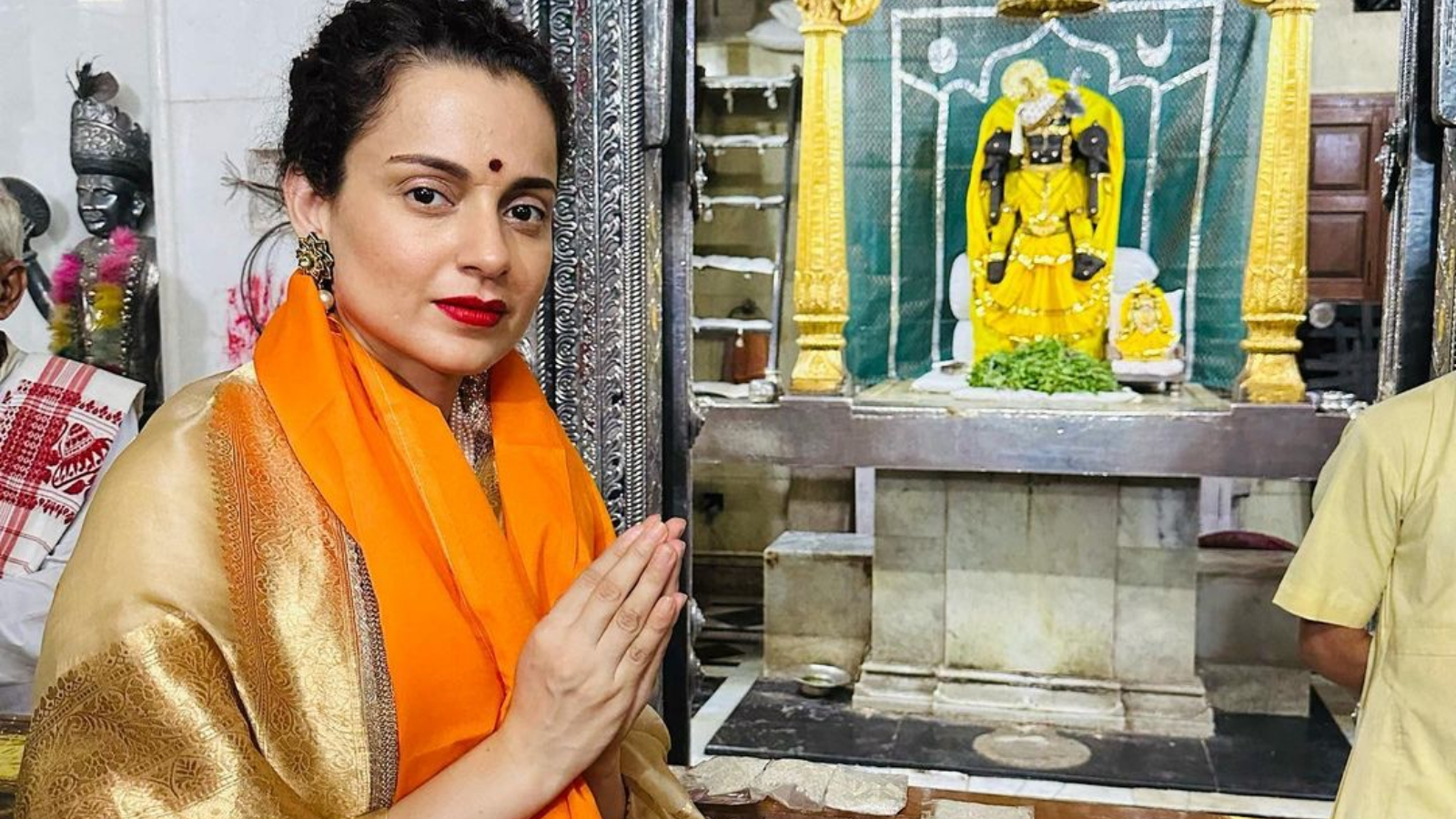The context of Mirch Masala is inspired from a four-page Chunilal Madia story, Abhu Makrani, as well as other stories of women’s self-defence in colonial times that director Ketan Mehta heard on his travels in Gujarat. Released in 1987, it powerfully captures rural pre-independence India.
https://www.youtube.com/watch?v=ec8wNibmgoQ
Sonbai (Smita Patil), a woman of great resolve, works in a chilli powder factory with some of the other women of the village. Subedar (Naseeruddin Shah) is newly posted in the village and engages in looting on his whims. He begins to fancy Sonbai and suggests that she has sex with him, to which she replies with a tight slap.
She then finds refuge in the chilli powder factory, where chowkidar Abu Miya (Om Puri) protects her and the other women as they are held hostage. In the meanwhile, the Subedar tries to acquire Sonbai, as though she were property. His desire aside, his masculine pride was wounded and blotching Sonbai’s reputation was his only redemption. And of course, Sonbai’s reputation and honour are attached with that of the village.
The scene where Sonbai and Subedar come face to face is perhaps the most powerful one that overturns everything problematic that the film has so far been assuming about women. While the lusty Subedar assumes he’s caught his prey, two women run out holding two ends of a cloth holding chilli powder and overturn it, thrusting that hot spice in the Subedar’s face.
Subedar’s masculine pride was wounded and blotching Sonbai’s reputation was his only redemption.
With that, they overturn the notions that women need the protection of more powerful men; that men will eventually get what they want one way or another; that only the rich and dominant caste can afford to have self-determination; that a woman’s body (especially if she is not of the dominant caste) doesn’t belong to her. With the Subedar crumbling down in pain, all of these notions crumble, at least symbolically.
The caste dynamics in the film is clearly visible though not overtly spoken about. Sarasvati is a dominant caste woman for she is the Mukhi’s wife, also indicated by the fact that she doesn’t work in the factory like the rest of the women. She has her own struggles of being caged, which she rebels against.
The women who work in the factory are of non-dominant castes. Lakshmi (Ratna Pathak Shah) who also works there, often goes to the Subedar to fulfil his lustfulness, further portraying the assumption of the sexual availability of a non-dominant caste woman. In the same vein, Sonbai is also told that she cannot afford to have the self-regard that she wants to.
The abuses for Sonbai come out in words like kamjaat (low-caste) and dayaan (witch), both of which are clearly caste-connotative. Further, Radha’s marriage to Mukhi’s brother is denied, for she also works in the factory and mustn’t be a respectable woman of the dominant caste.
Also Read: The Humiliating Model Of Motherhood In ‘Aradhana’
The way in which the women of the factory talk about sex, is quite unlike the perception that men have of it. It’s not associated with utmost honour and pride, and just about everything in a woman’s life. It’s seen with casualness, a kind of normalcy, using which they try to convince Sonbai to just do it.
The idea of sex as a lifeline for women comes forth when a woman in the factory says how the Subedar would be a good lover to have. However, for most of the other villagers, it was all about honour and virtue and pride. Sonbai in the end says, that she wouldn’t go, not even if her husband told her to, indicating that for her it wasn’t a matter of virtue, but that of self-respect and self-determination.
She made it clear that no matter what her social location was, nobody could tell her who to have sex with. It would’ve been very easy for Sonbai’s character to slip into the patriarchal notion of ‘a woman’s virtue is everything’ but the fact that it doesn’t makes this film as powerful as it is.
Further, the film carefully highlights the notion how men must protect ‘their’ women, and protecting women is a sign of ‘masculinity’. A villager comments how men who decide to give away Sonbai probably wore bangles. Eventually, the same bangle-ghaghara-choli-clad women cause the end of the cruel Subedar. Chowkidar Abu Miya also says how he’s the only man in the village for he is the only one protecting these women and questions if there is no other ‘man’ around.
The women are real, with real struggles, passions, and pleasures.
The idea of a convenient religion is also portrayed interestingly when the Pandit tries to convince Sonbai to go to the Subedar saying that sex and pleasure are just ‘moh-maaya’. The same Pandit would’ve otherwise said sex is sinful and even if it is just in one dialogue, the hypocrisy of religion comes out beautifully.
Of all the Bollywood feminist films out there, Mirch Masala gets it right in so many ways with its clarity of the differences of experience of women of different social locations. But most importantly, why this film clicks is because unlike other Bollywood feminist films, while it does show women’s struggles, not for a minute does it show women as weaklings.
The women are real, with real struggles, passions, and pleasures. Even while being held hostage, they find pleasure by playing with chilli and laugh their way through it. In its bright red hue, the best takeaway from Mirch Masala in these extremely cynical times would be that problems are not the only feminine reality, we also know pleasure, strength and hope.
Also Read: Mandi Film Review: A Marketplace Of Empowerment
Featured Image Credit: The Review Monk




